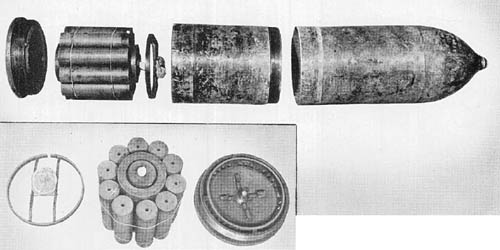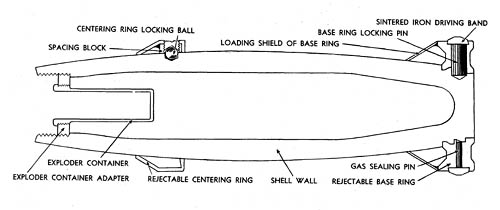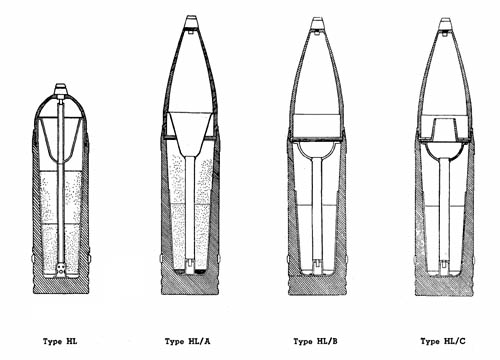
There are four known variations of the 10.5 cm (105 mm) hollow charge ammunition fired from the German 10.5 cm le. F. H. 18 series:
Type Hl has a deep conical cavity, a short ogive, and flash tube extending through the shaped cavity to the fuze booster. All types have an additional detonator booster combination at the base of the flash tube.
Type Hl/A has the same shaped cavity but has a larger diameter flash tube that is attached to the apex of cavity liner by a pressed collar, and does not extend into the cavity. This type has a long ogive.
The principal difference between types Hl/A and Hl/B is in a shallower, hemispherical-shaped cavity. The principal difference between types Hl/B and Hl/C is the addition of a funnel-like steel washer inverted over the cavity. This funnel is supposed to counteract the effects of centrifugal force on the hollow charge jet.
The explosive filler is pressed into two pellets in types Hl/A, Hl/B, and type Hl/C. Explosive fillers in all rounds are inclosed in waxed paper cartons. The metal ogive screws into the projectile, holding all components of the filler in place.
The aluminum fuze (AZ 38) carries the primer detonator. It is armed by centrifugal force and contains no other safety features. It functions by a “spit” from the booster, which travels down the central tube and initiates the base booster, and hence the main bursting charge.
ESSENTIAL MODIFICATIONS
Type Hl/A: (a) Lengthened nose-piece (ogive), giving greater standoff. (b) Elimination of flash tube between fuze and apex of cavity and larger diameter of flash tube.
Type Hl/B: (a) Further increase of standoff obtained by shortening the HE filler. Nose piece is identical with that of Type Hl/A. (b) Hemispherical cavity instead of rounded cone. (c) HE filling RDX/WAX, instead of RDX/WAX/TNT.
Type Hl/C: Introduction of a washer, shaped like an inverted funnel in front of the cavity. Otherwise, types B and C are essentially identical.
SPECIFICATIONS
| |
|
Hl |
|
Hl/A |
|
Hl/B |
|
Hl/C |
| Weight of projectile as fired: | 25.8 lb. | 27.1 lb. | 26.6 lb. | 27.2 lb. |
| H.E. filling, carton, wax: | | 4.6875 lb. | 3.5 lb. | 3.255 lb. |
| Empty shell: | | 22.55 lb. | 22.937 lb. | 22.315 lb. |
| Collar (“funnel”) | | | | .5195 lb. |
| Muzzle velocity f/s* | 1375 | 1360 | 1360 | 1360 |
Estimated performance at normal against Homogeneous armor.
Type Hl/A—170 mm (static) 105 mm (dynamic)
Type Hl/B—155 mm (static) 100 mm (dynamic)
Type Hl/C—155 mm (static) 100 mm (dynamic)
(From German claims)
*Firing with charge five which is normally used.
German: p. 310 (August 1, 1945)

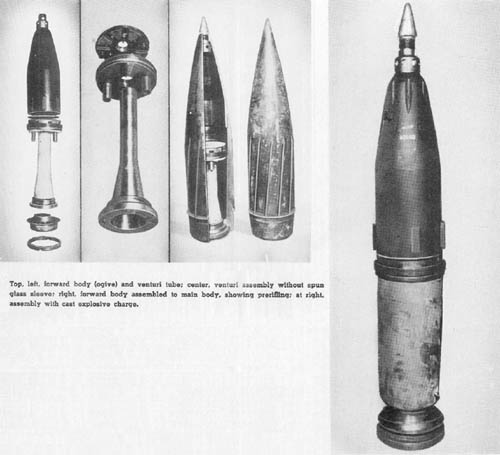

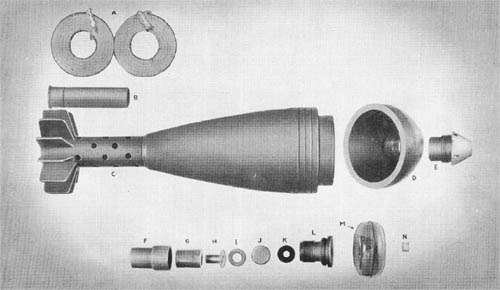
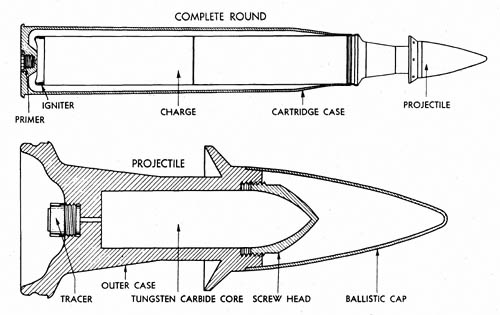
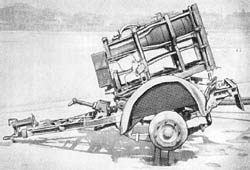 This rocket projector very closely resembles the
This rocket projector very closely resembles the 